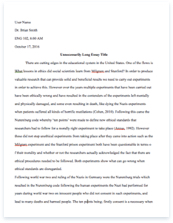Distribution in the Wider Marketing Context

- Pages: 3
- Word count: 523
- Category: Marketing
A limited time offer! Get a custom sample essay written according to your requirements urgent 3h delivery guaranteed
Order NowAlthough the focus of this thesis is on distribution, it is important to see distribution as a critical aspect of an organisation’s wider marketing strategy. Hudson (2008: 8) cited Kotler’s (1984) definition of marketing which reflected the importance of distribution as a major aspect of the marketing process:
The process of planning and executing the conception, pricing, promotion, and distribution of ideas, goods, and services to create exchange that satisfy individual (customer) and organisational objectives
Doyle and Stern (2006) emphasised ‘product’, ‘price’, ‘place’ (distribution) and ‘promotion’ as the four classical strategic elements of the marketing mix (4Ps). In considering the marketing of intangible services, rather than tangible products, these four elements were expanded by Wearne and Morrison (1998) in the light of their interest in hospitality marketing to include: ‘people’ and ‘positioning’. Smith and Chaffey also added ‘physical evidence’; ‘processes’; partnership (alliances) to the service product marketing mix. Doyle and Stern (2006) highlighted ‘staff’ and ‘service’ as elements in the service products’ marketing mix to the classical 4Ps. Actually, these two latter elements, which were added by Doyle and Stern (2006), were included in the previous elements – the ‘service’ element is the main component of the ‘product’ element in service products and the ‘staff’ element is reflected in the ‘people’ element.
In this study, the marketing mix will be considered as including: product, price, place, promotion, people, positioning; process; physical evidence; partnership. Distribution was located by different authors under the ‘place’ element in an organisation’s marketing mix (e.g. Wearne and Morrison, 1998). Doyle and Stern (2006) went further and considered ‘distribution’ as synonymous with the term ‘place’ in the marketing mix. Smith and Chaffey (2005) supported this point of view and emphasised the critical importance of distribution in the marketing mix. Distribution has been a critical aspect in the international success of Coca Cola and Amazon. For instance, Amazon has achieved incredible success as an online bookseller. Hollensen (2007) clarified that the importance of ‘distribution’ as part of the marketing mix lies in an organisation’s need to get access to the international markets.
3.2.2 Distribution
McCabe (2009) highlighted the necessity of understanding how to get access to the customer to deliver the marketing message and the organisation’s products and services. Hudson (2008) agreed with him and stressed the importance of designing a “distribution system” to work as a framework for making the organisation’s services available for customers. Armstrong and Kotler (2000) named five functions for the distribution channel: information; promotion; contact; matching; negotiation. Hudson (2008) added ‘financing’ to these functions which should help the organisation in bridging the gaps of time, place and possession between itself and the customers (Armstrong and Kotler, 2000). 3.2.3 Selecting Distribution Channels
Armstrong and Kotler (2000) named the selection of the distribution channel as having an influence on every other marketing decision. Various criteria were investigated to determine how to choose the distribution channel in the wider marketing context. Baines et al. (2008) emphasised seven key criteria in relation to determining the quality of the channel: dependability (consistency of representative or third party reservation companies. Most hotels also used traditional intermediaries










